Any sightseeing tour to Athens
must include the Acropolis. This ancient "city on a hill" is quite awesome, in the true sense of the word. It still dominates Athens--you can see the ruins from everywhere else in the city.
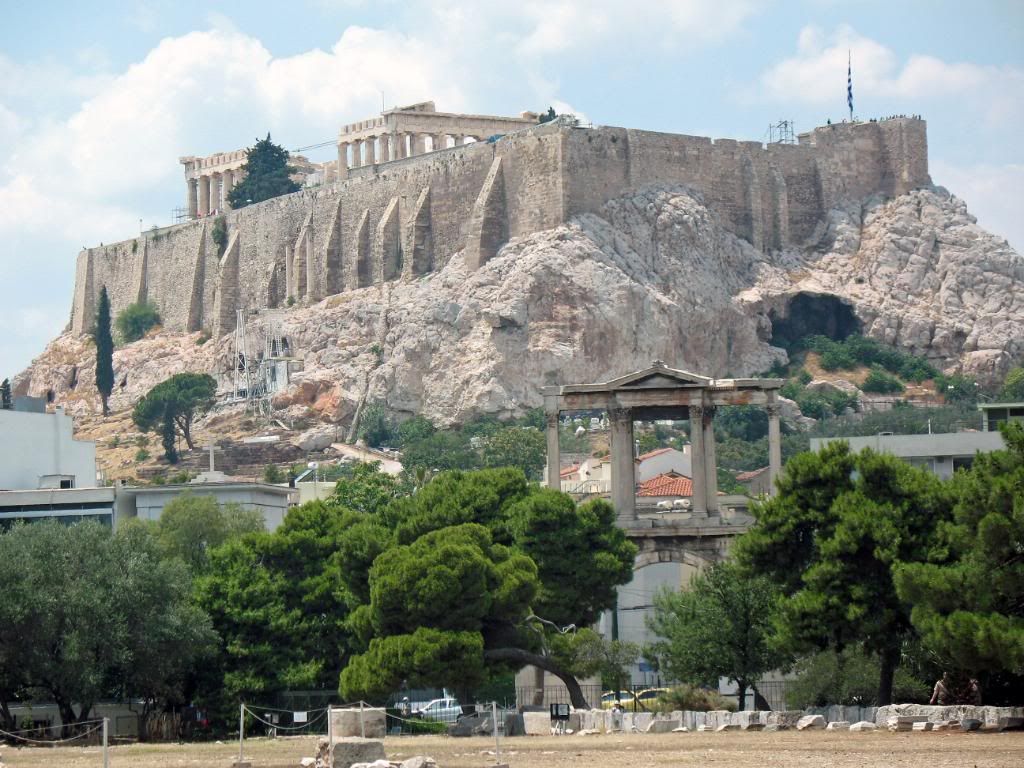
As my travel journal will attest, words cannot adequately convey the grandeur of the ruins. There's no way to fully describe the experience of walking through ancient Greek ruins... of finally seeing the things you've read about for so long, of absorbing artifacts and staring at plaques that make history come alive. My original attempts to write about it involved such salient phrases as "this was cool" and "wow." Rather than bore you with such inadequate phrases, I'll let the pictures speak for themselves!
On our second day in Athens, we arrived at the Acropolis as soon as it opened. We worked our way slowly uphill, with many pauses for water breaks. (Athens may have few public bathrooms, but they've very wisely placed drinking fountains at all of the major sites... we were grateful for every opportunity to refill our water bottles!)
Some of our first sights included the Theater of Dionysus and the Odeon of Herodes Atticus. Later--at the top of the hill--we viewed both ruins from a breathtaking distance.
The
Odeon, a music hall built in A.D. 161, still hosts performances during the annual Athens Festival. We attended a concert at night, but had to leave at intermission--I'd fallen asleep twice, and Mike was afraid I'd take a fatal tumble down the steep stone seating. (Oh, jet lag...)
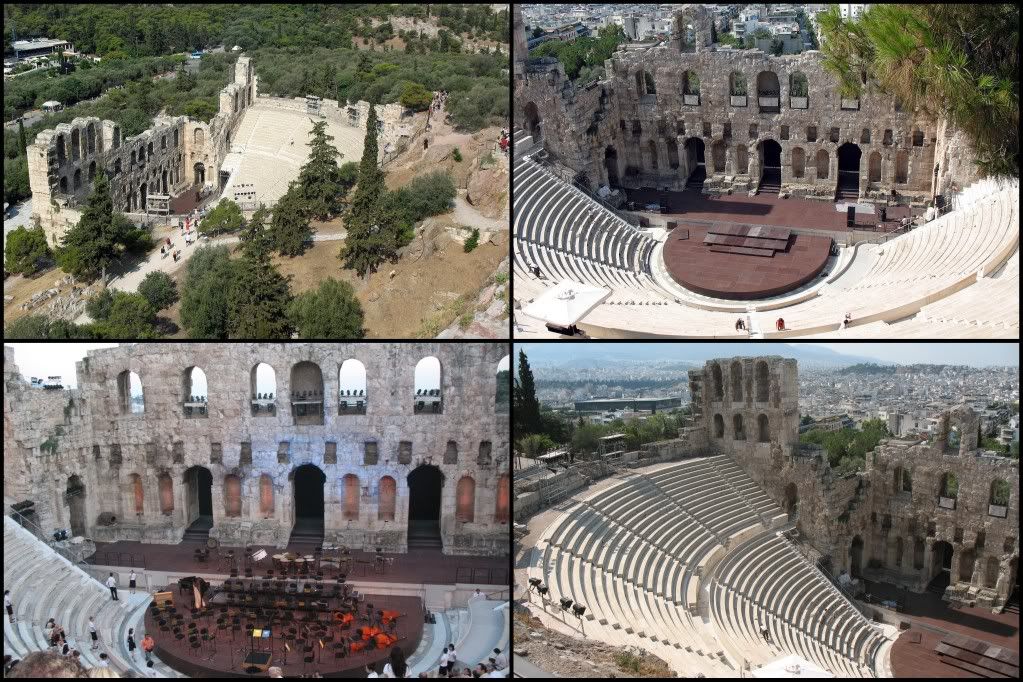 The Theater of Dionysus:
The Theater of Dionysus: Reason for my grin? This is where Sophocles watched his plays performed during the Golden Age! These photos capture me thinking of of
Oedipus and
Antigone... having a literature/history geek moment of truly epic proportions.
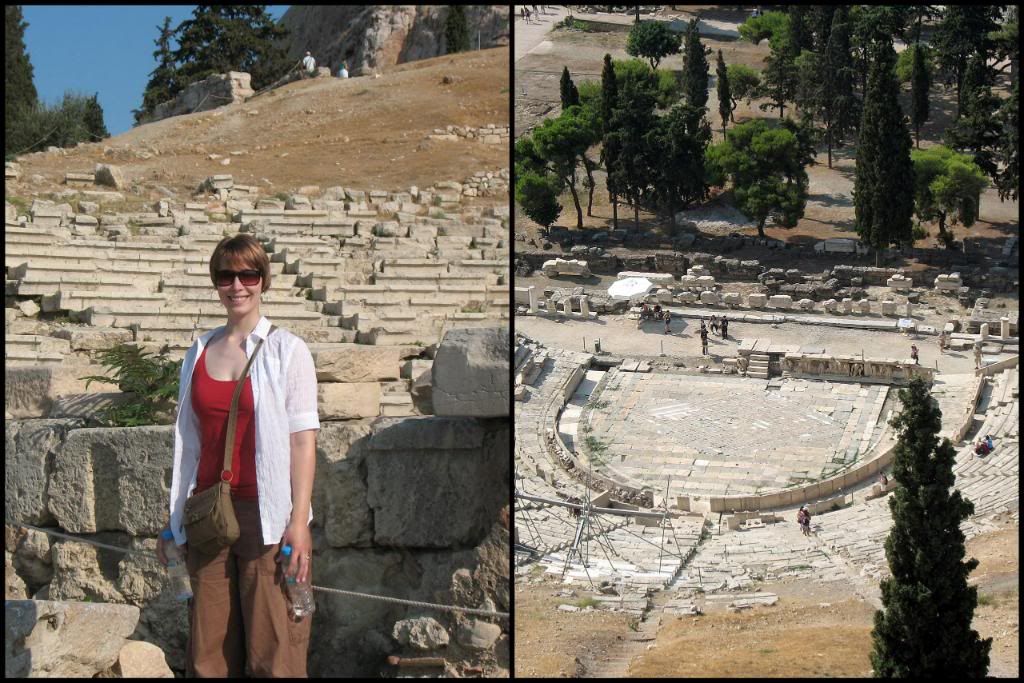
The Acropolis contains some truly marvelous examples of "shock and awe" engineering. Everything was designed to overwhelm original visitors to the city... and it still works for tourists today! Here we are at the Propylaea, grand entrance to the Acropolis.
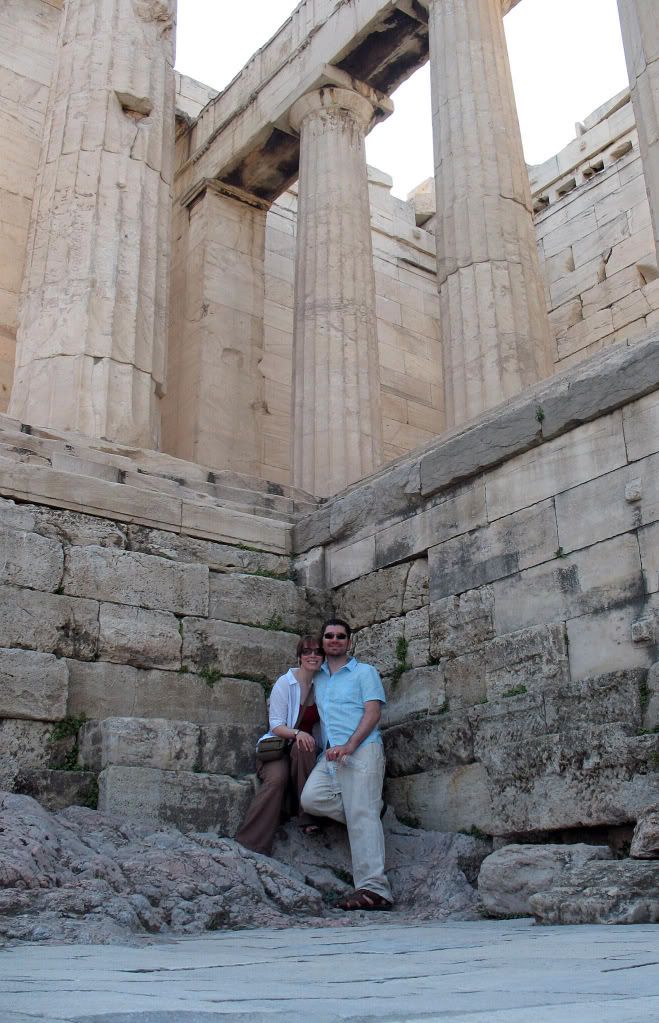
Our two favorite buildings up top were the Parthenon and the Erechtheion. It was hard to get good pictures, as the sun was merciless and the entire Acropolis swarmed with tourists. We did our best, though!
Parthenon:
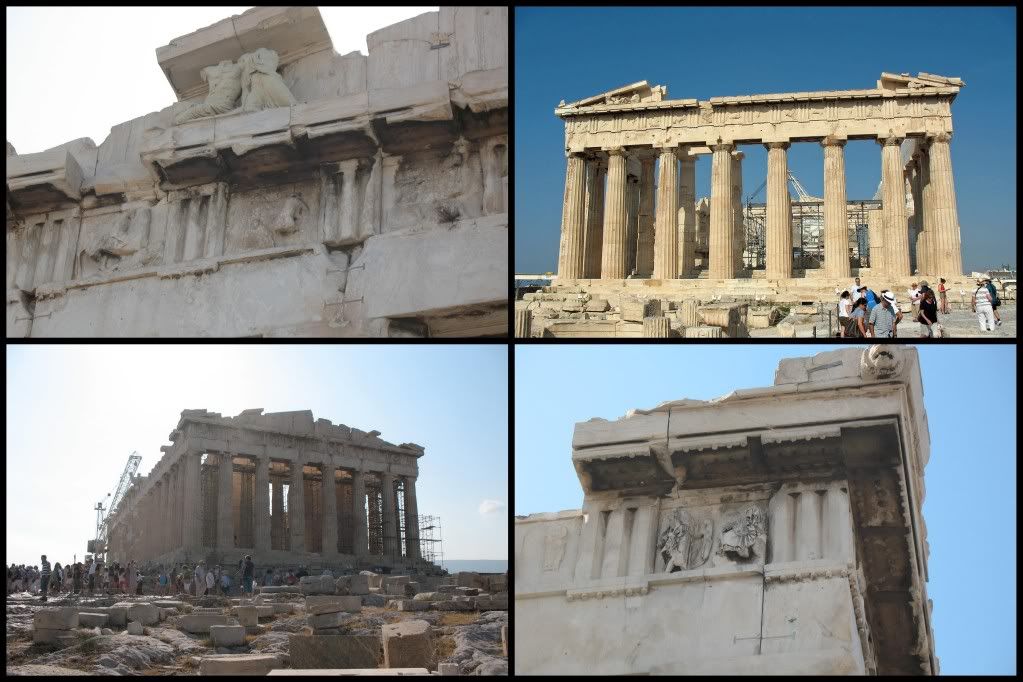
Erechtheion:

Of course, the up side of having so many fellow tourists around was that people were always willing to take pictures for us.

Many of the original sculptures, as well as artifacts found during excavation and renovation, are now housed at the
New Acropolis Museum. We had a lovely ramble through the museum at the start of our third (and final) day in Athens. Unfortunately, there were no photos allowed.
Perhaps one of the best things about the Acropolis was the view of other ruins. We got a sneak peek at the attractions we'd be visiting later.
the Temple of Hephaistos in the Ancient Agora (marketplace):
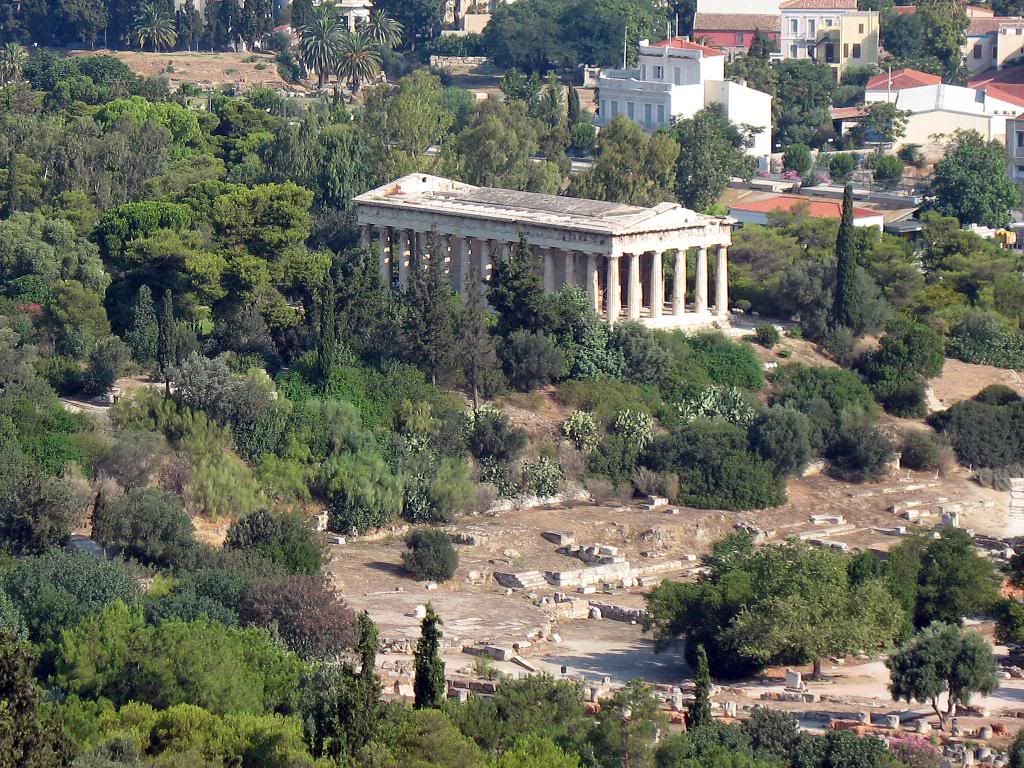
the Temple of Olympian Zeus:
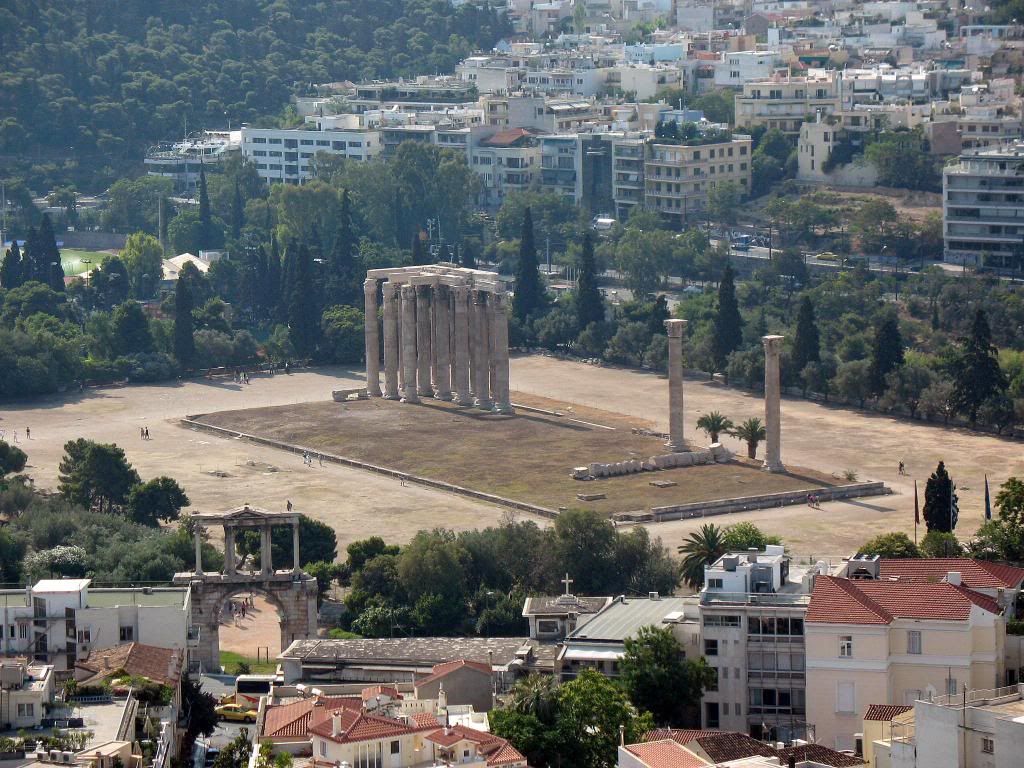
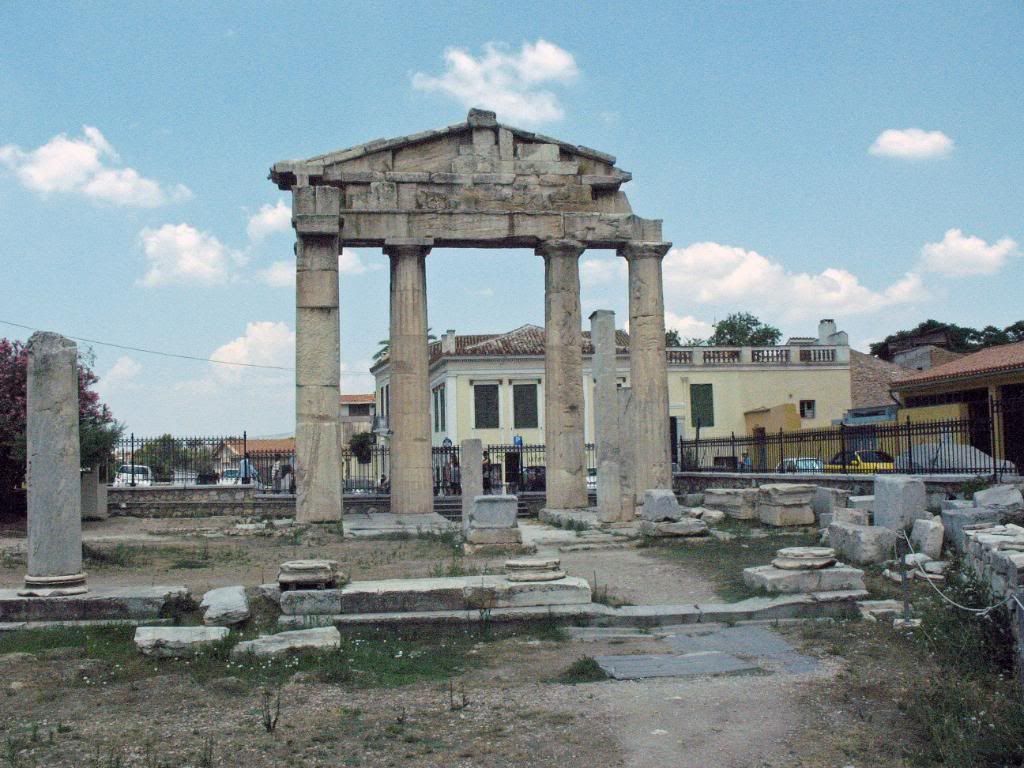
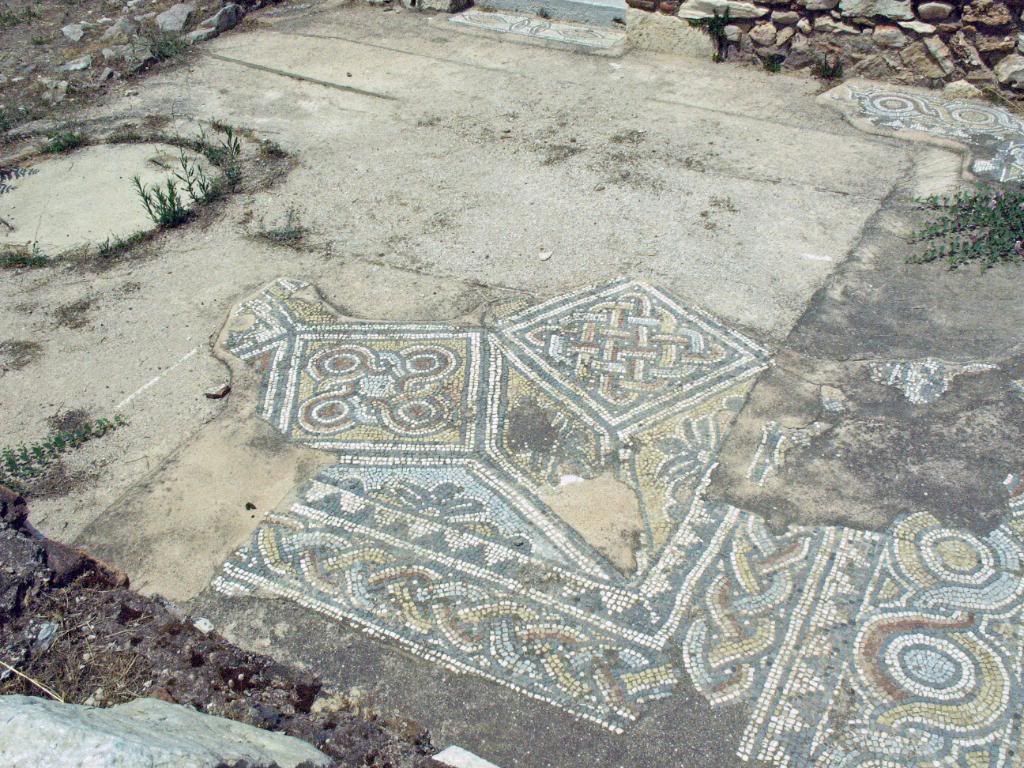


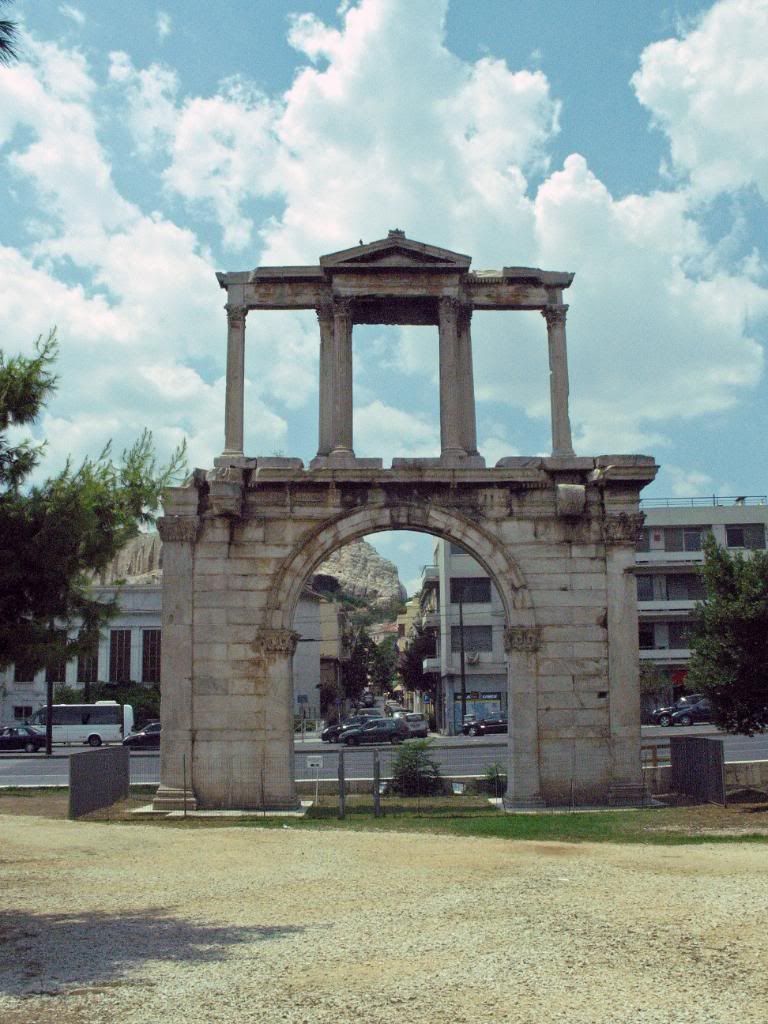
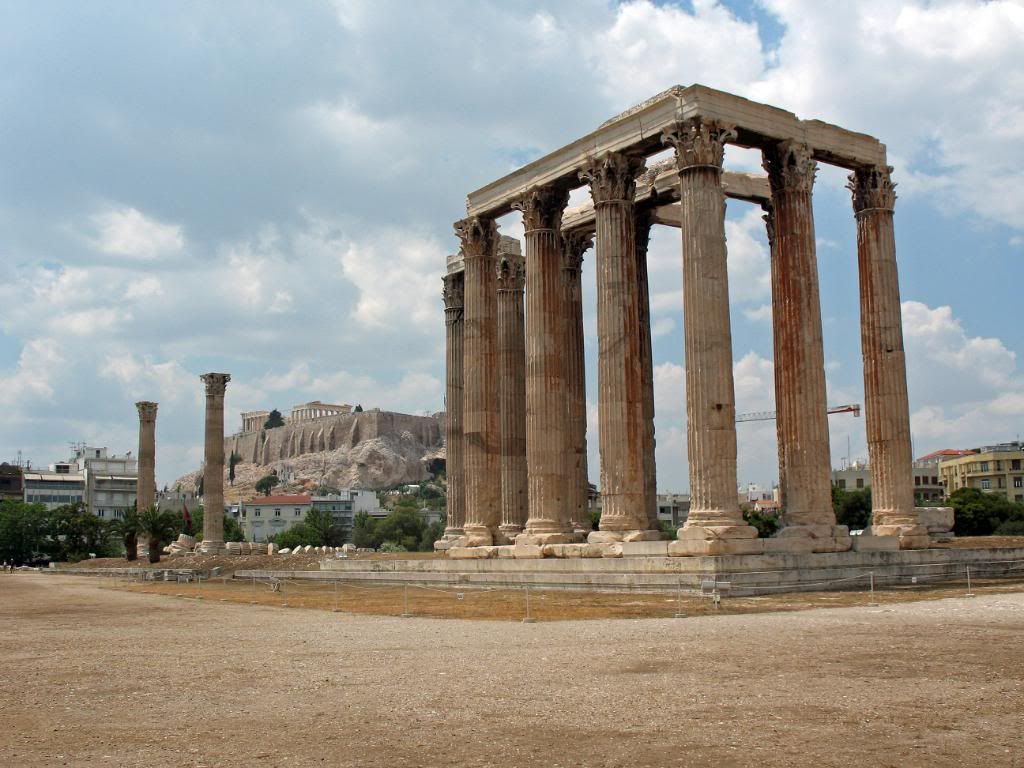

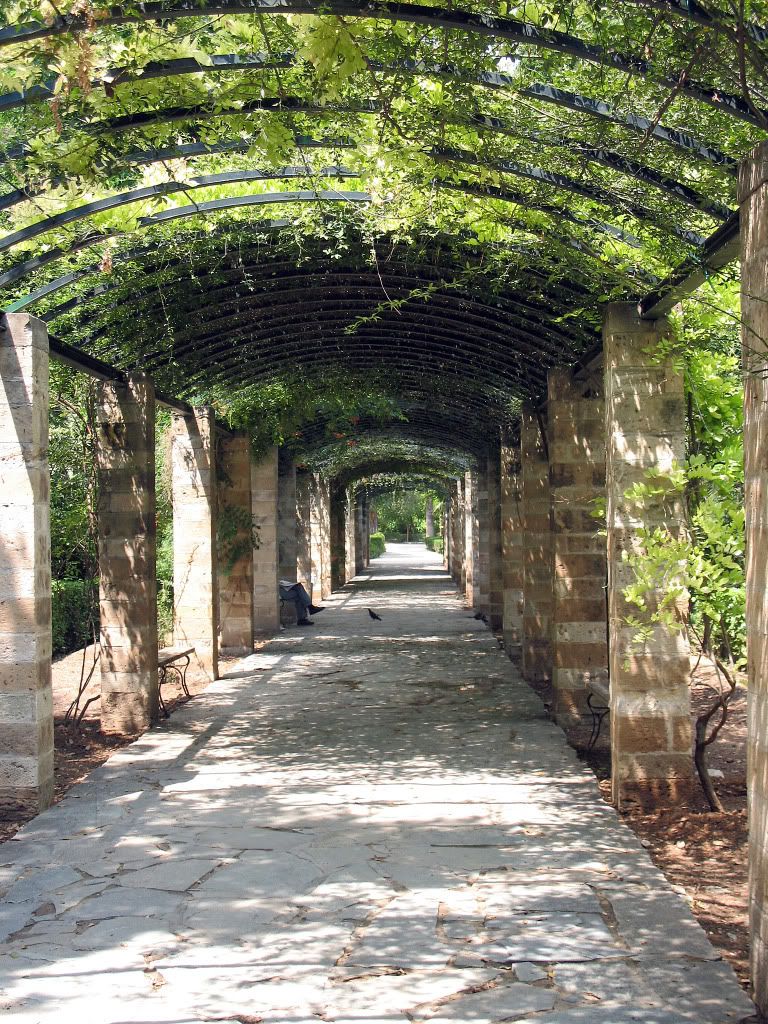 Having traipsed about for a good portion of the day, I entered my "fatigued and obnoxious" phase of the tour. Poor Mike--it's a wonder he didn't pitch me over the wall into some unlabeled archeological dig. We cut through the National Gardens to get a respite from the heat. Hurray for shade!
Having traipsed about for a good portion of the day, I entered my "fatigued and obnoxious" phase of the tour. Poor Mike--it's a wonder he didn't pitch me over the wall into some unlabeled archeological dig. We cut through the National Gardens to get a respite from the heat. Hurray for shade!







